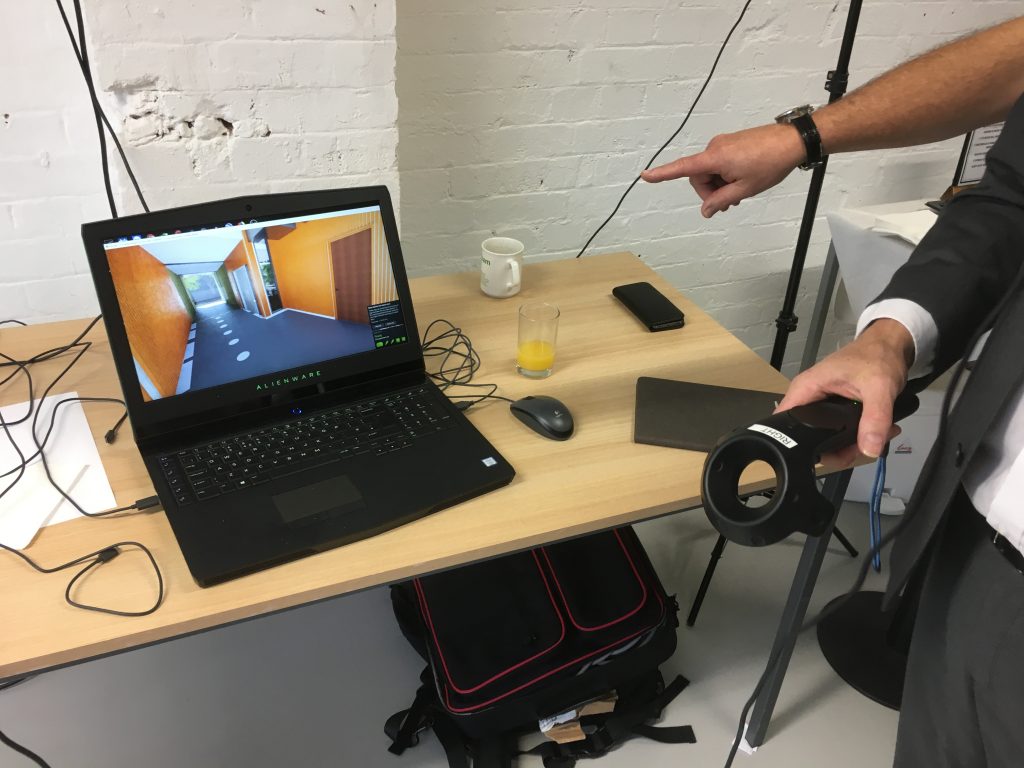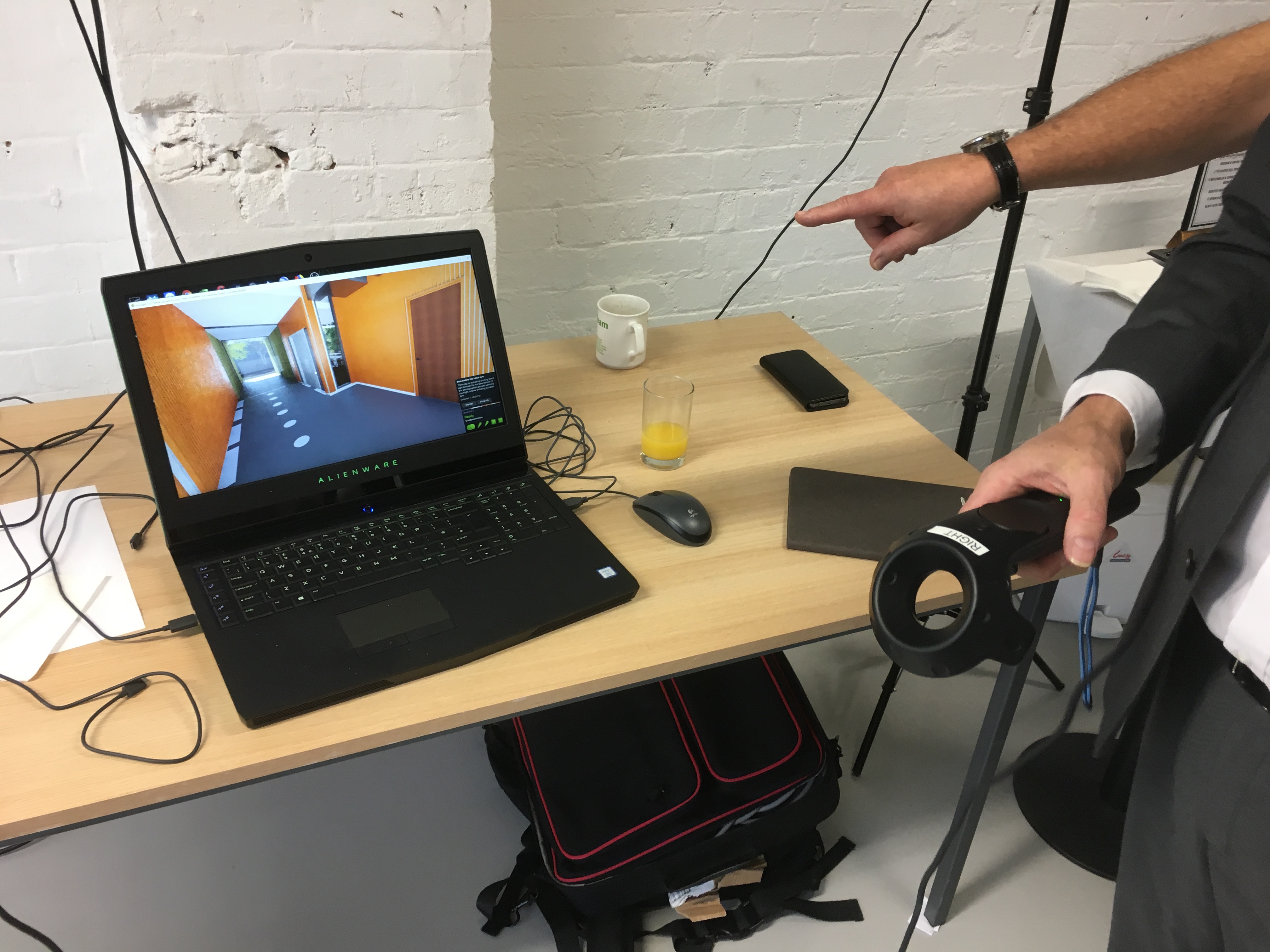
VR as EdTech?
Virtual Reality (VR) as a digital technology usable for educational purposes is still at the imaginative foothills of any potential it might have. Educators, educationalists and learners are only just starting to get their hands on these technologies, so it can be hard at this early stage to imagine the full extent to which VR can be effectively deployed for enhancing learning.
Late last term, I had a couple of VR experiences on campus. Although I’d dabbled with it previously at City, it had been largely scaffolded within others’ contexts, so these felt like early attempts at foraging out alone in such environments.
Sampling a virtual Sebastian Street
The first experience was at a lunch event for the Sebastian Street building, which is being developed as a new home for The City Law School (CLS). In the corner of a room on the building site, a room which also had exhibitions of proposed designs for the building and artefacts retrieved from the digging, was a VR headset and a pair of handset controllers. There was also a connected monitor that allowed all to see what the virtual seer would experience solely through their headset and visor. Having played a small role in the piece of research evaluation of the Atkin lecture theatre at Gray’s Inn Place, I was curious to see how the ideas and feedback generated from the academics that taught in that space had been translated – via the architectural design process – into a 3-dimensional model of what that next generation law-centred lecture theatre might look like.
Scaling greater heights
A couple of weeks later, I was contacted by a SMCSE PhD student looking for participants in his research into the impact of scent in virtual environments. Unable to resist the curious nature of this call, I joined him at City’s Human-Computer Interaction Lab one chilly December lunchtime. I was to experience climbing a ‘Virtual Alps’, and this time would be very different from getting tangled up in air conditioning ducts.
We began with a training programme, so I could acclimatise and grasp the rudiments of movement. I found myself behind a sort of control panel desk in a small spacecraft, being handed cartridges by a small, transparent, floating robot. The robot and I interacted with each other a little, mainly via me taking the cartridges, putting them into some sort of player, then following the instructions loaded from the cartridge. It was a pretty cute start, and felt relatively natural after a while (we’ve all seen enough robots in enough movies these days to have some sort of inclination of how to interact with a friendly droid). This was followed by a new environment that, having got to grips with the basics of moving my virtual self, would then allow me to get a handle on the act of virtual climbing – looking like a rock face with grip points, but with the top layer removed.
The last two environments were the same, but differed in that the fourth and final experience had the addition of synthetic scents to contribute to the immersion. These virtual Alps were quite breathtaking in their own ways, with a glorious alpine sunrise available if I looked to my side or deer dabbling in a below stream when I looked down. They were also quite exhilarating, and I was tasked with climbing around this sheer rock face to gather flowers. Many times, I ‘fell’, but as with any good computer game, was able to go back to the last level I’d been on rather than having to start again (with two broken legs). Once I’d got used to ‘chalking’ my hands, I even attained a degree of proficiency in this environment.
Headset off and back in the real world of the lab, I was sweating from the climb, my breathing was laboured and my hands ached from gripping various rock ledges. While I was fully aware of being present in the real world whilst simultaneously immersed in a virtual one, the virtual one encountered through my senses felt far more realistic than the physical environment I was standing in whilst within it.
VR and learning
What do these ‘moments’ suggest for using VR as an educational technology? Can VR become a core tool for enhancing learning, as the virtual learning environment (VLE) has done? If any physical environment can be recreated virtually, could virtual courtrooms, maternity wards or boardrooms be integrated into City’s curricula to aid future generations of student barristers, midwives or executives?
I felt almost as I’d been for a proper rock climb in the latter experience, and got a better flavour for the Sebastian Street development than architectural cross sections can deliver. My immediate lessons, though, were that VR is something that would be difficult to do with large numbers of students. Consider the investment needed for a full cohort sat in the Oliver Thompson Lecture Theatre or the Great Hall to all have their own headset. It would require plenty of training in order for the learning experience to be properly scaffolded, and so that users could therefore get the most out of the experience, which takes time and has significant implications for curriculum design.
The nature of the virtual environment is important too. I already know how to walk up and down stairs in buildings or climb rock faces, so these felt fairly authentic, but I’ve never interacted with a floating droid in a spaceship before. Despite my claim of it feeling natural, it still took enough of a leap of fantasy that incorporating something comparable into a higher educational context might ‘complicate’ matters at a minimum. In-world navigation needs to feel fairly ‘natural’ too, in order that the user is not spending the entire experience scrambling around trying to figure out how to do what they usually do very easily in the real world. Lastly, in both my cases, my headsets were hooked up to an additional monitor, allowing the person facilitating the VR session to get a sense of what the user is seeing. Mine both had wired connections between headset and monitor, so both my session facilitators needed to keep an eye out to make sure I didn’t accidentally trip over a cable I couldn’t see. To the best of my knowledge, it’s currently not that easy to wirelessly project VR content to a nearby screen and thus remove the trip hazards or other hassles with cables.
I’d certainly like the opportunity to gather feedback on the Sebastian Street lecture theatre via virtual visits from those that will be teaching in it. However, they would probably all need a bit of extra help in making their own ways down to the basement!


